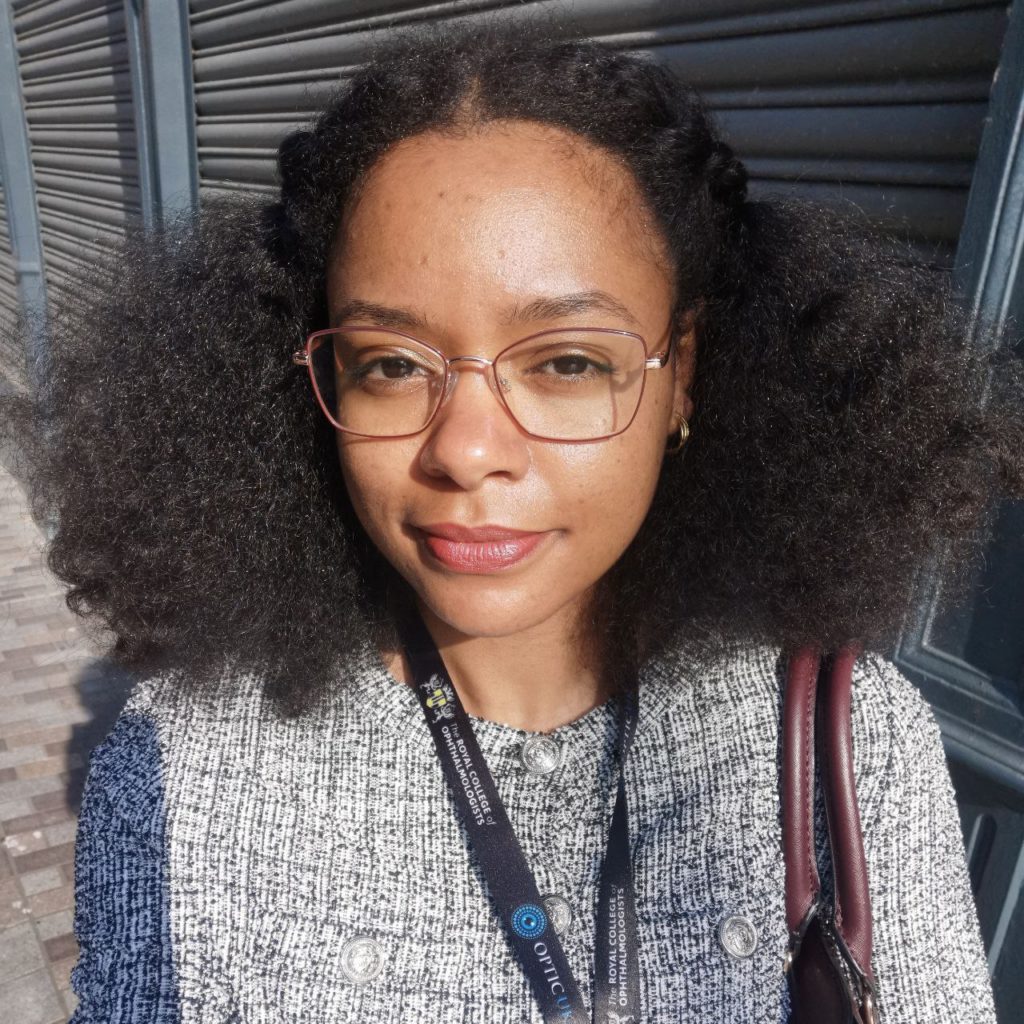
The following blog post has been written by Dr. Josephine Bates, who shares her thoughts on the BEAR Conference 2024.
From the 23 to 24 April, 2024, the 13th annual BEAR (Birmingham Environment for Academic Research) Conference took place in the Chemical Engineering building at the University of Birmingham. The conference revolved around High-Performance Computing (HPC) across various disciplines, providing an excellent platform for postgraduate researchers and academics to showcase their work. The two-day event was packed with insightful talks, challenging speakers to hone their scientific communication skills before a diverse audience. Lunchtime provided opportunities for networking and exploring poster sessions, fostering interdisciplinary collaboration.
Day 1: Diving into disciplines
The conference began with a keynote presentation by Neil Ashton titled “How HPC, ML, and Cloud Computing are helping to move towards a digital design process for the automotive and aerospace industries.” His talk introduced one of the key themes of the conference – simulations – by highlighting their use in automobile design.
Chandan Bose followed with a compelling discussion on Computational Fluid Dynamics (CFD) and the OpenFOAM User Group. OpenFOAM is a tool for simulating fluid flow and heat transfer. Chandan emphasised how simulation is crucial in modern engineering, because researchers “can’t keep crashing and retesting”; HPC brings efficiency to iterative design processes.
Roberto Hart-Villamil then presented on ‘The AI-driven geometry optimisation of a stirred tank CFD model in laminar flow’, showcasing AI-based optimisations of industrial equipment. Xue Lian continued with her intriguing presentation on the ‘Coupled SPH-DEM (smoothed particle hydrodynamics – discrete element method) for simulating coarse food particles in a non-Newtonian conveying fluid’, bridging computational methods and food processing.
Lunch and social sessions were vibrant with networking opportunities and poster presentations, allowing attendees to engage with current research and widen their research network.
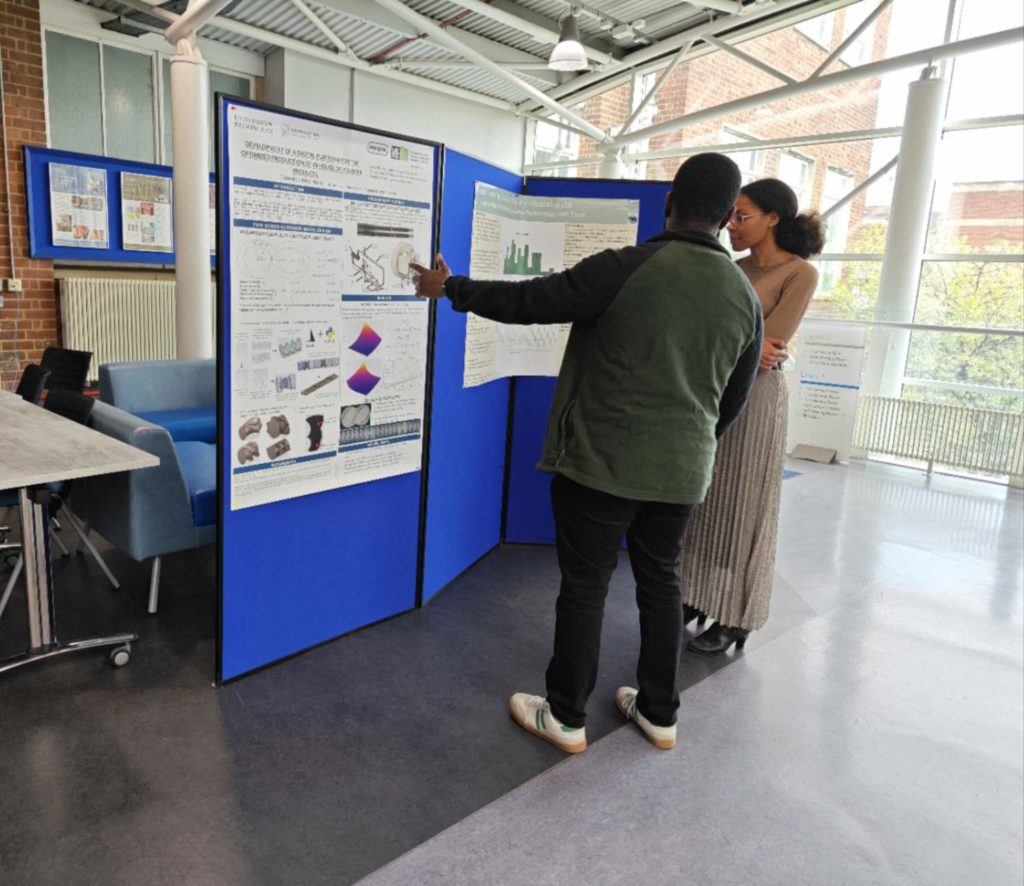
The afternoon session began with Kamilla Kopec-Harding, who presented on the ‘R User Group’ and the ‘Research Data Science Services‘, highlighting the collaborative efforts in the data science community. Lu Hai then discussed ‘FEM (finite element method)/the Abaqus User Group’. The Abaqus Special Interest Group uses numerical solutions for partial differential equations, such as FEM.
I had the privilege of being the penultimate speaker, presenting my use of bootstrapping in a clinical liaison psychiatry audit. Given an interdisciplinary setting, I was able to gain unique perspectives on how better to educate clinicians about statistical methods.
I was able to gain unique perspectives on how better to educate clinicians about statistical methods.
William Pearce concluded the first day with his talk on the ‘Investigation of high gas flow rates on hydrodynamics in two-phase gas-liquid stirred tanks using positron emission particle tracking (PEPT)’, rounding off a day full of diverse and thought-provoking presentations.
Day 2: Engaging discussions and interactive sessions
The second day kicked off with a keynote talk by Jack Sykes on ‘EvoPhase – A University of Birmingham spinout’, highlighting the journey from academic research to entrepreneurial success. EvoPhase’s team were all present at the BEAR Conference: Dominik Werner, Andrei Leonard Nicusan, Jack Sykes and Dr Kit Windows-Yule. The company aims to drive more efficient, scalable and sustainable research, and development powder and fluid processing.
Dominik Werner’s talk on ‘Optimising mixing processes with DEM: from problem identification to solution’ was particularly engaging, as it involved audience participation. Attendees logged into BlueBEAR, downloaded data, and processed it together, offering a hands-on experience of HPC applications.
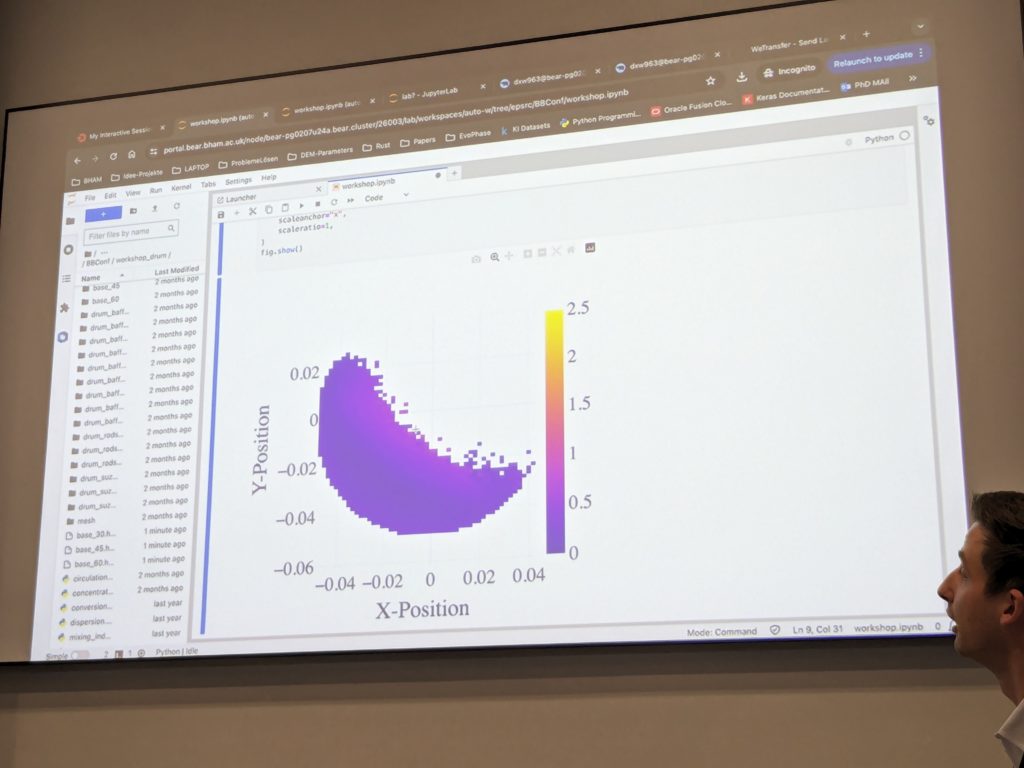
Before lunch, Daniel Rhymer sweetened the conference with his talk on ‘Understanding the dynamics of vertical stirred mills within chocolate processing’, providing insights into the complexities of food engineering.
The BEAR conference was an incredible opportunity to present my work, engage with diverse research, and expand my professional network.
A keynote lecture by Dr. Kit Windows-Yule on ‘AI-based optimisation of industrial processes and process equipment’ followed lunch. His discussion on evolutionary algorithms and their varied outcomes in continuous production of medications was enlightening.
The afternoon session, focused on biological applications, commenced with Andrew Quinn’s talk on ‘CHBH-on-BEAR: cluster computing for neuroimaging analysis’, featuring the use of the CamCAN dataset and the development of neuroimaging-focused markdown documents deployed by GitHub.
Kirsty McCready then presented ‘Deconstructing the Ceratopteris genome’, explaining the use of the Salmon algorithm for RNA-seq and subsequent analysis using BLAST. Margarita Sarant followed with her talk on ‘In search of the big data benefit when predicting language outcome after stroke using machine learning’, showcasing the potential of big data in medical predictions.
Katherine Jeynes-Cupper introduced ‘mobileRNA: A new tool for efficient analysis of RNA expression in multiple genomes’, highlighting advancements in RNA analysis. Christopher Mahony concluded the session with his research on ‘Runx1 as a key transcription factor that drives synovial fibroblast pathogenicity in rheumatoid arthritis’, offering emerging insights into the cellular pathology of rheumatoid arthritis.
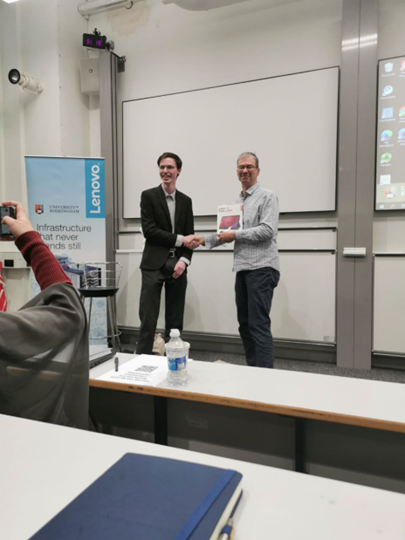
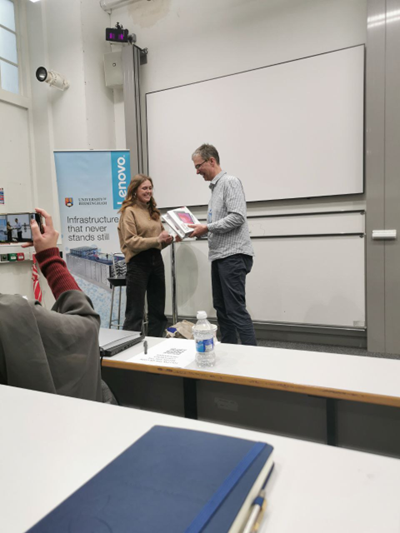
The conference culminated with the announcement of the presentation winners, recognising outstanding contributions and innovative research shared over the two days. Reflecting on my experience, the BEAR conference was an incredible opportunity to present my work, engage with diverse research, and expand my professional network. The interdisciplinary nature of the event shed light on the pivotal role of HPC in advancing various fields, making it a truly enriching experience.
Dr Josephine Bates
If you would like to help out in our next BEAR Conference, you can find out more in our blog post about being in the organising committee, or email us at: bearinfo@contacts.bham.ac.uk
